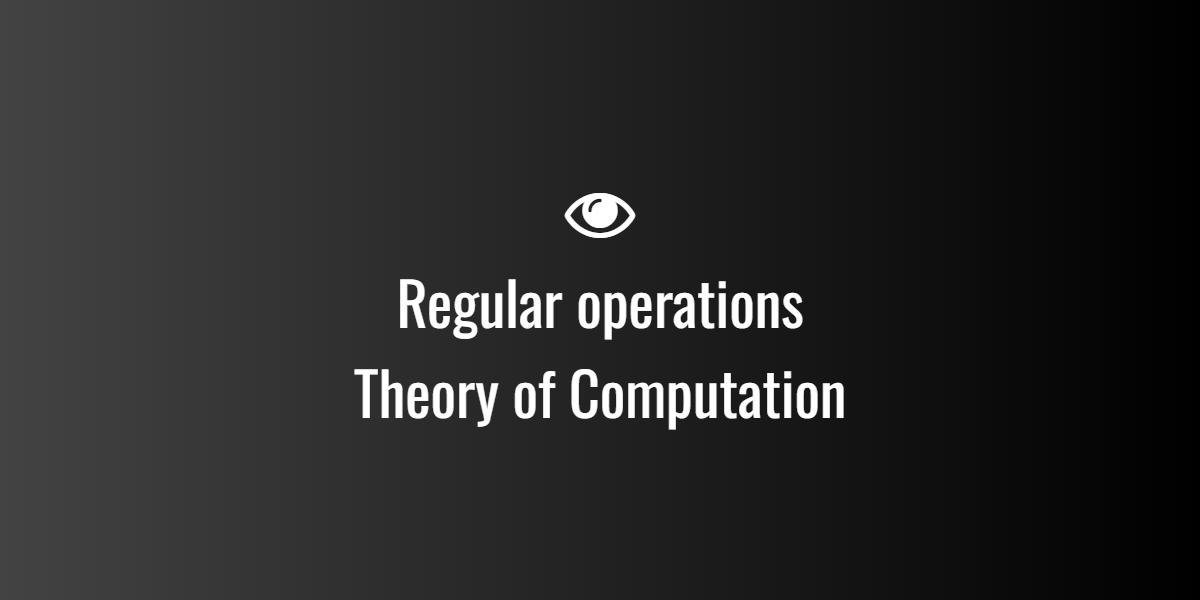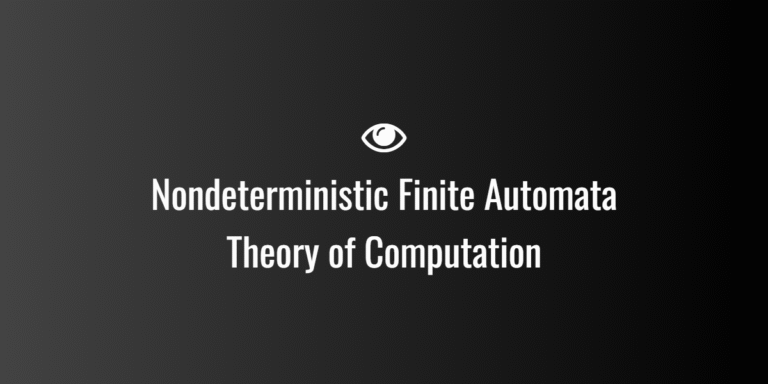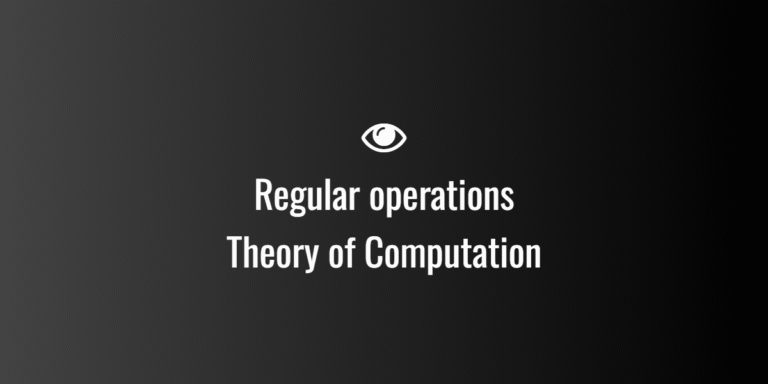
Regular operations Theory of Computation
🌱 The Three Main Regular Operations
There are three classic operations every student should know:
- Union
- Concatenation
- Kleene Star
Let’s explore them in a warm, easy-to-understand way.
🔹 1. Union (L₁ ∪ L₂)
Union means either-or.
If a string is in L₁ or in L₂ (or in both), then it belongs to the union.
Everyday analogy
Imagine two groups of friends:
- one group likes tea,
- the other likes coffee.
The union is everyone who likes tea OR coffee.
Example
Let:
L₁ = {“a”, “aa”}
L₂ = {“b”, “bb”}
Then:
L₁ ∪ L₂ = {“a”, “aa”, “b”, “bb”}
🔹 2. Concatenation (L₁ L₂)
Concatenation means joining strings, one after another.
If x is from L₁ and y is from L₂, then xy (joining x and y) is in L₁L₂.
Everyday analogy
Think of sticking two small words together to make a bigger one.
Like joining “sun” and “light” → “sunlight”.
Example
L₁ = {“a”, “ab”}
L₂ = {“c”, “d”}
L₁L₂ = {“ac”, “ad”, “abc”, “abd”}
Just take one from L₁ and stick it to one from L₂.
🔹 3. Kleene Star (L*)
Kleene star means “repeat the language any number of times”.
This includes:
- zero repetitions
- one repetition
- many repetitions
Everyday analogy
Think of a wallpaper pattern.
One tile is L.
Repeating the tile creates many possible designs — short ones, long ones, or even an empty wall.
Example
If L = {“01”}
Then L* = { ε, “01”, “0101”, “010101”, … }
The empty string ε is always included because “zero repetitions” is allowed.
🎨 Original Diagram (ASCII)
Here’s a simple diagram that shows the three regular operations visually:
REGULAR OPERATIONS
------------------------------------------------
1. UNION (L1 ∪ L2)
+---------+ +---------+
| L1 | | L2 |
+----+----+ +----+----+
\ /
\ /
\ /
+------------------+
| L1 ∪ L2 |
+------------------+
2. CONCATENATION (L1 L2)
L1: { x } L2: { y }
x + y = xy
+------------------------+
| All xy combinations |
+------------------------+
3. KLEENE STAR (L*)
L repeated:
ε
L
LL
LLL
...
+----------------------+
| L* = L^0 ∪ L^1 ∪ … |
+----------------------+This gives a bird’s-eye view of how the operations work.
🌟 Why These Operations Matter
Regular operations are not just definitions — they are powerful tools that help us:
- build new regular languages from old ones,
- design automata step-by-step,
- understand patterns in strings,
- work with regular expressions,
- and prove that certain languages are regular.
In short, these operations allow us to construct languages like building blocks.



